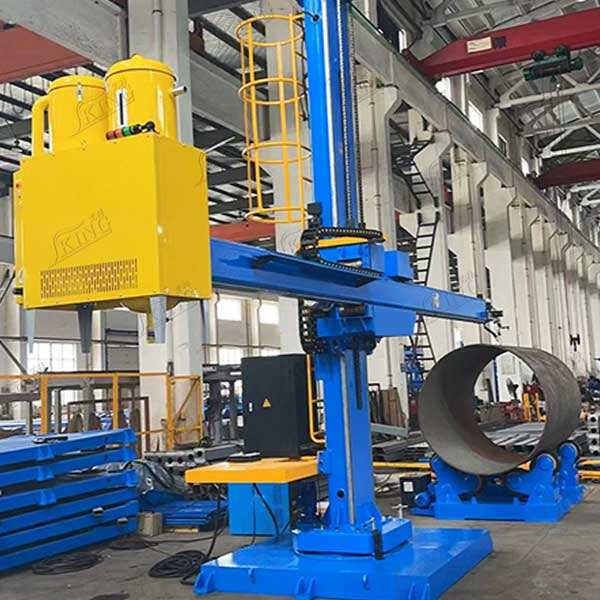The evolution of column welding has transformed significantly in recent years, with technological advancements and innovative methodologies reshaping how structural integrity is achieved in construction projects. As we approach 2025, column welding continues to be a critical aspect of building construction, requiring precise execution and comprehensive understanding of both traditional and emerging techniques.
Modern column welding demands a perfect balance of technical expertise, material science knowledge, and practical experience. The increasing complexity of architectural designs and structural requirements has elevated the importance of maintaining exceptional welding standards, particularly in high-rise buildings and industrial facilities where structural integrity is paramount.
Selecting the right equipment for column welding begins with understanding the specific requirements of your project. Modern welding machines now feature digital controls and preset parameters for various material thicknesses and joint configurations. Multi-process welders capable of MIG, TIG, and stick welding provide the versatility needed for different column welding applications.
High-frequency pulse welders have become increasingly popular for column welding, offering superior arc stability and penetration control. These machines allow for precise heat input management, crucial when working with high-strength steels commonly used in column construction.
Proper material preparation remains fundamental to successful column welding. Surface cleaning must extend beyond simple wire brushing to include chemical cleaning when necessary, especially for materials prone to contamination. Edge preparation requires precise beveling angles and root faces to ensure optimal joint performance.
Quality control measures now incorporate advanced non-destructive testing methods, including ultrasonic testing and digital radiography, to verify weld integrity. These technologies provide immediate feedback on weld quality, allowing for rapid corrections when necessary.
Contemporary column welding often involves complex joint designs that go beyond traditional V-grooves. Double-sided joints with backing bars have become standard practice for heavy columns, while partial penetration joints may be specified for less critical applications. Understanding these configurations and their appropriate applications is essential for achieving optimal structural performance.
The introduction of hybrid joint designs, combining different weld types within the same connection, has revolutionized column welding efficiency. These innovative approaches often result in reduced welding time while maintaining or improving joint strength.
Modern alignment tools, including laser systems and digital levels, ensure precise column positioning before welding. Proper fit-up tolerances must be maintained throughout the process, with special attention to root gaps and alignment of mating surfaces. The use of advanced fixturing systems helps maintain position during welding, preventing distortion and maintaining geometric accuracy.
Digital welding parameter control systems now allow for real-time monitoring and adjustment of critical variables. These systems track heat input, travel speed, and other parameters that directly influence weld quality. The ability to store and recall optimal welding parameters for specific applications ensures consistency across multiple joints and projects.
Advanced monitoring systems can detect variations in welding conditions and automatically adjust parameters to maintain weld quality. This capability is particularly valuable in column welding where maintaining consistent penetration and fusion is crucial.
Modern column welding projects require comprehensive documentation of procedures, qualifications, and inspection results. Digital documentation systems now integrate with welding equipment to automatically record essential data, creating a traceable record of each weld's execution and quality verification.

Temperature and humidity control in the welding area has become increasingly important for column welding quality. Modern projects often employ environmental monitoring systems and temporary enclosures to maintain optimal conditions. These measures prevent contamination and ensure consistent weld quality regardless of external weather conditions.
Ventilation systems have evolved to provide better protection for welders while maintaining stable atmospheric conditions around the weld area. These systems now incorporate smart controls that adjust airflow based on real-time monitoring of welding fumes and ambient conditions.
The latest safety equipment for column welding includes advanced auto-darkening helmets with expanded viewing areas and improved sensor technology. Personal protective equipment now incorporates cooling systems and ergonomic designs to reduce welder fatigue during extended operations.
The primary factors influencing column weld quality include proper material preparation, accurate joint alignment, appropriate welding parameters, environmental conditions, and welder skill level. Consistent monitoring and control of these factors are essential for achieving high-quality results.
Professional welding equipment used in column welding should undergo calibration at least every six months, with more frequent checks for machines used in critical applications. Daily functional checks and regular maintenance are also essential for optimal performance.
Recent advances include real-time digital radiography, phased array ultrasonic testing, and AI-assisted defect detection systems. These technologies provide faster, more accurate inspection results while maintaining comprehensive documentation of weld quality.
 Hot News
Hot News2025-11-18
2025-11-24
2025-11-11
2025-11-05
2025-11-03
2025-10-28